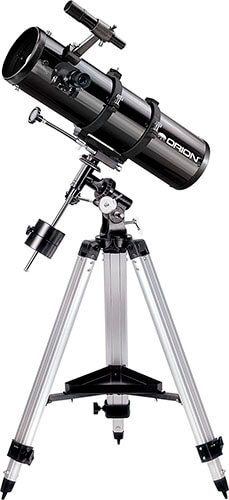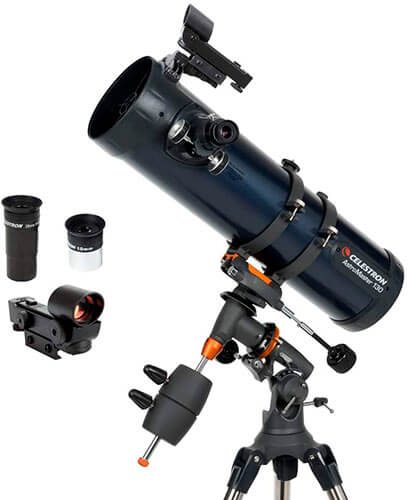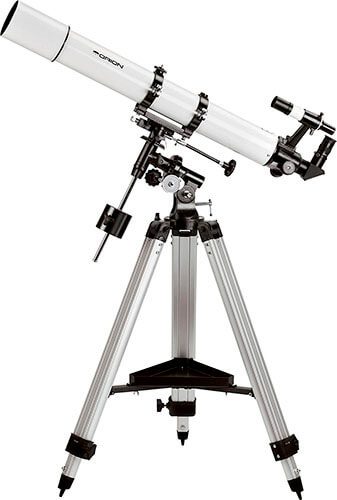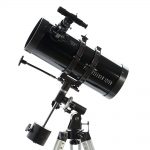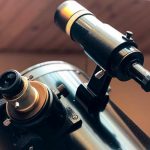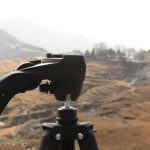Best Telescope Under $300 – 6 Of The Best in 2020
Telescopes can cost a great deal of money, but if you already know you want the best telescope under $300, this article has got you covered.
This is a superb price point to get yourself a great telescope. Doesn’t matter if it’s your first foray into astronomy or not.
The point of this guide is to help you take away all the guesswork. And to ensure you have enough information to pick the best option for yourself.
In the main, $300 is not a lot to spend when you consider how much some high-end scopes cost, but it’s still too much money to throw away on a telescope that’s not right for you.
In our article, the best telescope under $300, we’ll give you a rundown of 6 telescopes we believe offer you the best value for money and explain the pros and cons of each one.
Our Top 6 Best Telescopes Under $300
- Orion SkyQuest XT6 Plus Dobsonian Reflector Telescope
- Orion 09007 SpaceProbe 130ST Equatorial Reflector Telescope
- Celestron – AstroMaster 130EQ Newtonian Telescope
- Orion AstroView 90mm EQ Telescope
- Orion 10015 StarBlast 4.5 Astro Reflector Telescope
- Orion 10022 StarMax 90mm TableTop Maksutov-Cassegrain Telescope
Orion SkyQuest XT6 Plus Dobsonian Reflector Telescope – Best Overall Choice For Telescope Under $300
Regarded as the best Dobsonian for beginners, the Orion SkyQuest XT6 Plus is our overall best choice telescope under $300. We’ve chosen the Plus version because it’s more generous with accessories, which you will need.
For those readers not having heard of a Dobsonian or Newtonian, we’ll offer this brief explanation.
Dobsonian describes the telescope’s mount, and the configuration of the telescope’s optics is a Newtonian. The Newtonian eyepiece location works well with a Dobsonian mount, hence the reason they go well together.
The Plus version of the XT6 has 2 eyepieces and a 2x Barlow. The two eyepieces are a 25mm Plossl(48x magnification) and a 10mm Plossl(120x magnification), making an excellent starter set. You can add different eyepieces later on if wish.
There is a red dot finder included and while it works OK, you might be better upgrading that to something else if you really want to delve into deep-sky observing.
There’s also a solar filter included with the accessories.
The telescope’s base is quite heavy but assembles easily, it’s a stable base for viewing and offers a smooth operation.
What Can You See?
With 6-inch aperture and 6-inch diameter f/8 parabolic mirror, you can see a lot, even from the suburbs. Neptune’s moon Triton, Saturn’s bands, Cassini division and several moons, and you will see Jupiter’s moon as a disc, not just a spot of light.
When viewing our moon you can see craters about a mile wide. If it’s a black night, you can check out a few hundred galaxies.
The Orion SkyQuest XT6 Plus is simple to operate and does not complicate matters. It’s a telescope for any level of experience. The best Dobsonian telescope for under $300.
- Good Optics
- Nice accessories
- Lightweight
- Good price for the quality
- 6″ aperture
- Not portable
- Cheap red dot finder
- Plastic focuser
Orion 09007 SpaceProbe 130ST Equatorial Reflector Telescope – Best High-Quality Telescope Under $300
Since 1975 Orion offers telescopes for every level: Beginner, Intermediate, Advanced, and Expert.
Having a 5.1-inch aperture reflector this Orion SpaceProbe 130ST collects plenty of light to offer excellent views of the moon, nebulas, star clusters and brighter galaxies. This telescope is more for the serious beginner and intermediate astronomers.
A portable and versatile telescope. With its short 24″ optical tube and fast f/5 focal ratio, it’s a hugely enjoyable experience using this scope. Ideal for a backpacking telescope.
As mentioned, it is lightweight at only 27lbs fully assembled.
Inclusive with the purchase are the following accessories, 2 Sirius Plossl eyepieces (25mm and 10mm), collimation cap, and a 6×30 finder scope.
An EQ-2 equatorial telescope mount sits on an adjustable tripod, allowing manual slow-motion tracking of moving objects.
After you have made the alignment necessary, you can use your finderscope to point the 130ST towards the sky and search out the objects you wish to view.
The image is nice and clear. You can make out the red surface of Mars, Orion Nebula, the rings of Saturn, Andromeda Galaxy, and craters on the moon. An excellent deep-sky telescope for the price you’ll pay.
Viewing objects in the night sky are only half the fun, knowing what to look for and understanding what you see makes everything so much more enjoyable. Orion’s Starry Night Special Edition software will help you accomplish this in no time.
- Lightweight
- Portable
- Excellent optics
- 130mm aperture
- Collimatable
- Excellent selection of accessories
- Equatorial mount
- Tripod accessory tray
- Lightweight mount
- Needs better instruction booklet
Celestron – AstroMaster 130EQ Newtonian Telescope – Best Beginner Telescope Under $300
Celestron’s AstroMaster 130EQ is a Newtonian reflector on an equatorial mount. A powerful telescope ideally suited to the serious beginner. It’s still a handy portable telescope, but a little on the heavy side to take hiking or out on any field trips.
We mention serious beginners only because equatorial mounts take some setting up and require patience, many beginners want to get straight on with stargazing. Very understandable and that’s why the majority choose an Altitude/Azimuth mount.
With an equatorial mount, you track in one direction only. The alt/azimuth mount requires you to track both vertically and horizontally.
Two slow-motion control knobs for precise adjustments when you’re following the movement of objects at night.
Another reason we like this telescope for beginners is the large 130mm aperture. This allows for good brightness and clarity of images. Once you have the telescope set up properly, it’s very easy to find the objects you’re searching for and keeping them centered.
Along with the telescope are some excellent accessories. Two eyepieces 20mm (45x magnification) and 10mm (90x magnification), a travel tripod, and a StarPointer red dot finderscope.
- EQ equatorial mount
- Decent optics
- 17lbs weight
- Easy tracking
- Easy to set up
- Add on a motor drive (paid extra)
- Need to pay extra for 2 x Barlow lens
- Too heavy for field trips
- No carrying case
- Poor quality control on some parts
- Takes time to set up
Orion AstroView 90mm EQ Telescope – Best Intermediate Telescope For Under $300
The Astroview 90mm is the best telescope for terrestrial and celestial viewing at this price point, but it’s not for the absolute beginner. It’s also a refractor telescope, and refractors tend to have excellent image quality.
It’s an average speed telescope enabling it to perform in both wide-field observation and high magnification viewing. But having only the 90 mm aperture, dim deep-sky objects are just outside of its capabilities.
The EQ mount enables manual tracking of moving objects, and if you were to add a smartphone adapter, it would enable you to capture lunar images.
Good Optics
Refractor telescopes have glass lenses and use mirrors. The lenses are great for sharpness, they just don’t allow as much light as a reflector lens. The Astroview incorporates two lenses to reduce chromatic aberrations, although it doesn’t get rid of them altogether.
Accessories
Two eyepieces accompany the telescope: a 25mm Plossl (36x magnification) and a 10mm Plossl (91x magnification). High quality, but if you want to maximise the capability of the scope, you could opt for a 6mm eyepiece and a 32mm for a wider view and a little lower magnification than the 25mm eyepiece.
There is also a 6 x 30 finderscope, which would have been better had it been a red dot finderscope.
The EQ mount is fairly standard and does its job, but will not accept the weight of a DSLR camera on top of the telescope if you were thinking of using one.
It’s a nice stargazer telescope for viewing star clusters, some galaxies, the Orion Nebula and the moon. It’s an excellent scope for terrestrial viewing, but you will need to buy a correct-image diagonal or you won’t see the correct orientation through the scope.
- Sharp optics
- Quality optical tube
- For terrestrial and celestial viewing
- Good refractor for the price point
- Portable/Lightweight
- Nice telescope set
- Only smartphone photography
- Flimsy tripod
- Extra purchase of correct-image diagonal for terrestrial viewing
Orion 10015 StarBlast 4.5 Astro Reflector Telescope – Best Telescopes For Kids Under $300
The Orion Starblast 4.5 is the best grab and go telescope for kids, for its ease of carrying, set up, and use. And with a price of well under $300 is a great tabletop telescope.
The telescope will provide splendid views even at high magnification, as long as you can collimate it correctly. Which is not a simple thing for beginners to manage on their own. With some help and patience, it’s well worth it though.
While the Starblast 4.5, is an excellent telescope for its price the accompanying eyepieces are not. To get the most from this telescope it’s advisable to buy new eyepieces.
We suggest a 32 mm Plossl, a 15 mm gold-line, a 6 mm gold-line, and a Barlow. Even using the 6mm (76x magnification) you’re only achieving about 50% of the telescope’s capabilities. That will not come cheap, but if affordable, then well worth it.
Remember, it’s a tabletop model, so not as manouverable as one with a tripod and getting it into a position where you can view comfortably can be troublesome, especially when being used by a child.
Being a reflector type telescope, its best use is for deep-sky viewing.
Explore the milky way, Andromeda galaxy dust lane. If you own better eyepieces, you can see far more of the solar planets, Jupiter, Mars, Saturn and Venus.
- Very user-friendly
- Ideal for kids
- Excellent focal length
- Pre-assembled
- Compact telescope
- Apartment telescope
- Cheap eyepieces
Orion 10022 StarMax 90mm TableTop Maksutov-Cassegrain Telescope – The Best Budget Telescope For Under $300
The grab-and-go tabletop Maksutov-Cassegrain is an excellent compact budget telescope from Orion. You will be able to view the Moon along with brighter planets, for example, Jupiter, Saturn, and Mars.
At only six and a half pounds assembled, the StarMax is ideal for those wanting a portable telescope for camping and hiking trips. Plus, if you like using a scope in the backyard, it’s very easy to move around to get the best views.
The 90mm aperture collects more than enough light to view deep-space objects, globular clusters, nebulas, and many of the brighter galaxies.
The optical tube, 90mm f/13.9 Maksutov-Cassegrain, a red dot finder, and two 1.25″ Plossl eyepieces 25mm (50x magnification) and 10mm (125x magnification) complete the optics.
Are you interested in viewing the large open clusters? If so you will need to buy an extra eyepiece, possibly a 32mm (39x magnification).
The Orion’s upper magnification limit is 180x, but it’s worth buying 6.4mm (195x). It might be over the recommended limit, but on clear nights you will get some very sharp images of the moon. The quality of StarMax’s optics is definitely capable.
If you’re also interested in a scope you can use it for bird and wildlife watching, then you can do so with the StarMax but the 32mm eyepiece we mentioned earlier would be an advantage. Keep in mind it has a narrow field of view, and with daytime viewing, a wider field of view is better.
For the value you get, this is a tremendous telescope, if you combine great optics, price point, and portability, it’s hard to beat.
- Excellent Optics
- Easy To Use
- Stable Platform
- Versatility
- Set up quick and easy
- A good set of accessories
- Narrow field of view
- Need Extra Eyepieces
- Aiming is not easy
Conclusion
Refracting vs Reflecting Telescopes
A refracting telescope will cost more than a comparable reflecting telescope. The higher the quality of refracting lenses, the greater the price difference there will be. If cost is a determining factor, over which to buy, then you might consider a reflecting telescope.
Size
Reflectors are usually smaller because they use a mirror to fold the light from the aperture.
Maintenance
The mirrors inside a reflector telescope need aligning to give the best performance. This process is collimation. Without this, or done incorrectly, the images you will see are not clear and the telescope will have difficulty focusing. For beginners to astronomy, this can be a laborious process to accomplish.
Optical Performance
A high-quality refractor will produce sharper and clearer images than a comparable reflector. But if the lens is inferior quality, it can introduce chromatic aberration (distortion and blurred images). A reflector is not subject to the same issues and therefore cheaper reflector telescopes sometimes have better optical clarity.
In Use
For the sheer convenience of setting up quickly and easily, it has to be a refracting telescope. But to get the best images you need a high-quality refractor lens and that will cost more money. The cheaper way to go about this, if you have a restrictive budget, is to go with a large aperture reflector.
These reviews are for the best telescopes under $300. They may have differences in the type of lens, mounts, and aperture sizes, but they are all perfect for beginners up to the intermediate level.
When you’re looking for the best telescope, it comes down to choice every time. You must decide what you want from a telescope, at this price no telescope can be master of everything.



